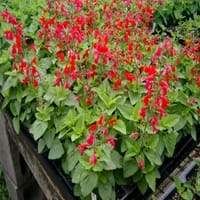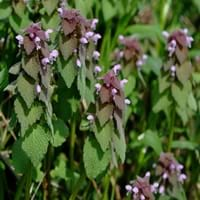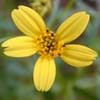Type
Herbaceous Perennial
Flowering Plants
Origin
Southeastern United States, South-Central United States, Texas, Mexico, South America
World/Pandemic, Europe, Asia
Types
Not Available
Not Available
Habitat
Chaparral, open Woodlands, Thickets
Cultivated Beds, gardens
USDA Hardiness Zone
8-10
4-8
AHS Heat Zone
12 - 1
Not Available
Sunset Zone
A1, A2, A3, H1, H2, 1a, 1b, 2a, 2b, 3a, 3b, 4, 5, 6, 7, 8, 9, 10, 11, 12, 13, 14, 15, 16, 17, 18, 19, 20, 21, 22, 23, 24
Not Available
Habit
Oval or Rounded
Spreading
Flower Color
Red
Purple, Pink
Flower Color Modifier
Bicolor
Bicolor
Fruit Color
Brown
Not Available
Leaf Color in Spring
Green
Purple, Dark Green
Leaf Color in Summer
Green
Purple, Dark Green
Leaf Color in Fall
Green
Not Available
Leaf Color in Winter
Light Green
Light Green
Leaf Shape
Heart-shaped
Oval to egg shaped
Plant Season
Summer, Fall
Not Available
Sunlight
Full Sun
No Shade, Partial shade
Growth Rate
Very Fast
Very Fast
Type of Soil
Clay, Loam, Sand
Clay, Loam, Sand
The pH of Soil
Acidic, Neutral, Alkaline
Acidic, Neutral, Alkaline
Soil Drainage
Well drained
Average
Bloom Time
Summer, Late Summer, Early Fall, Fall, Late Fall
Spring, Late Spring
Tolerances
Drought
Drought
Where to Plant?
Container, Ground, Pot
Ground
How to Plant?
Seedlings
Root Division, Seedlings
Plant Maintenance
Medium
Medium
Watering Requirements
Medium
Average Water Needs, Do Not over Water, Requires regular watering
In Summer
Lots of watering
Lots of watering
In Spring
Moderate
Moderate
In Winter
Average Water
Average Water
Soil pH
Neutral, Slightly Acidic
Slightly Acidic
Soil Type
Clay, Loamy, Sandy
Clay, Moist, Well drained
Soil Drainage Capacity
Moist, Sandy
Moist, Well drained
Sun Exposure
Partial shade
No Shade, Partial shade
Pruning
Remove damaged leaves, Remove dead branches, Remove dead leaves
Pinch or prune as they grow to promote branching and bushiness, Remove deadheads
Fertilizers
General purpose liquid or granular fertilizer
All-Purpose Liquid Fertilizer
Pests and Diseases
Aphids, Powdery mildew, Rust, Stem rot
Not Available
Plant Tolerance
Drought
Drought
Flower Petal Number
Single
Single
Fragrant Bark/Stem
No
Yes
Foliage Texture
Medium
Medium
Foliage Sheen
Matte
Matte
Attracts
Hummingbirds
Not Available
Allergy
Not Available
no allergic reactions
Aesthetic Uses
Borders, Cottage Garden
Ground Cover
Beauty Benefits
Not Available
Not Available
Environmental Uses
Air purification
Air purification
Medicinal Uses
anticoagulant, antimicrobial
Astringent, Diaphoretic, Diuretic, Purgative, Styptic
Part of Plant Used
Bark, Leaves
Flowers, Leaves
Other Uses
Showy Purposes, Used as a spice
Employed in herbal medicine, Used in Homeopathy
Used As Indoor Plant
Yes
No
Used As Outdoor Plant
Yes
Yes
Garden Design
Cottage garden, Mixed Border
Groundcover
Botanical Name
SALVIA coccinea
LAMIUM purpureum
Common Name
Blood Sage, Texas Sage
Purple Archangel, Purple Deadnettle, Red Deadnettle
In Hindi
Texas Sage
Purple Deadnettle
In German
Texas Sage
Lila Taubnessel
In French
Texas Sage
Violet Ortie blanche
In Spanish
Sabio de Tejas
Púrpura Deadnettle
In Greek
Τέξας Sage
μωβ Deadnettle
In Portuguese
Texas Sábio
Roxo Deadnettle
In Polish
Texas Sage
Jasnota purpurowa
In Latin
Texas Sage
Purpura Deadnettle
Phylum
Magnoliophyta
Magnoliophyta
Class
Magnoliopsida
Magnoliopsida
Family
Lamiaceae
Lamiaceae
Clade
Angiosperms, Asterids, Eudicots
Angiosperms, Asterids, Eudicots
Tribe
Mentheae
Not Available
Subfamily
Nepetoideae
Lamioideae
Number of Species
Not Available
Season and Care of Texas Sage and Purple Deadnettle
Season and care of Texas Sage and Purple Deadnettle is important to know. While considering everything about Texas Sage and Purple Deadnettle Care, growing season is an essential factor. Texas Sage season is Summer and Fall and Purple Deadnettle season is Summer and Fall. The type of soil for Texas Sage is Clay, Loam, Sand and for Purple Deadnettle is Clay, Loam, Sand while the PH of soil for Texas Sage is Acidic, Neutral, Alkaline and for Purple Deadnettle is Acidic, Neutral, Alkaline.
Texas Sage and Purple Deadnettle Physical Information
Texas Sage and Purple Deadnettle physical information is very important for comparison. Texas Sage height is 60.00 cm and width 30.50 cm whereas Purple Deadnettle height is 10.20 cm and width 15.20 cm. The color specification of Texas Sage and Purple Deadnettle are as follows:
Texas Sage flower color: Red
Texas Sage leaf color: Green
Purple Deadnettle flower color: Purple and Pink
- Purple Deadnettle leaf color: Purple and Dark Green
Care of Texas Sage and Purple Deadnettle
Care of Texas Sage and Purple Deadnettle include pruning, fertilizers, watering etc. Texas Sage pruning is done Remove damaged leaves, Remove dead branches and Remove dead leaves and Purple Deadnettle pruning is done Pinch or prune as they grow to promote branching and bushiness and Remove deadheads. In summer Texas Sage needs Lots of watering and in winter, it needs Average Water. Whereas, in summer Purple Deadnettle needs Lots of watering and in winter, it needs Average Water.





